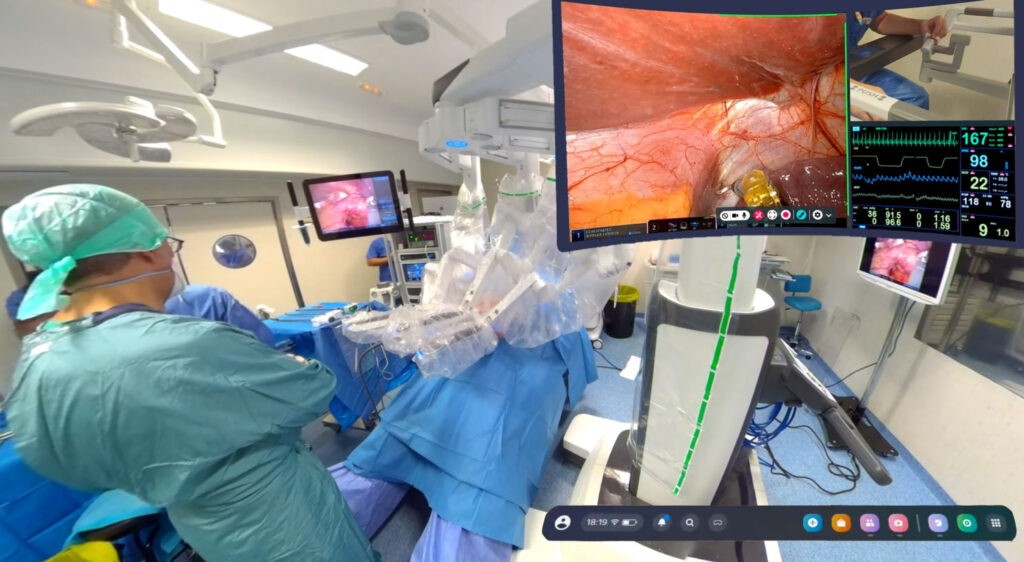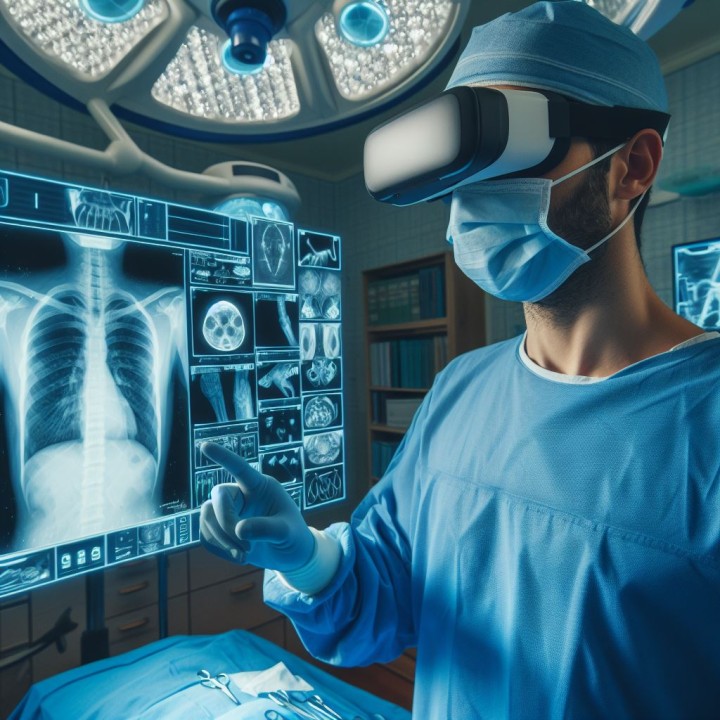Having accurate information about the medical equipment at all times in the operating room is crucial for the success of surgeries. However, it is often difficult to ensure that this information is directly accessible to the entire surgical team. To address this limitation, a common practice is to overscale the number of monitors or screens in the O.R., in different positions and orientations, thus being visible from different locations in the room.
Additionally, procedures involving 3D vision devices (stereoscopic), such as surgical robots, laparoscopes, or surgical navigators, usually require consoles or monitors with glasses that allow the visualization of these images in 3D. In most cases, this stereoscopic information is limited to the lead surgeon, complicating the tasks of supporting medical staff who must rely on 2D images on conventional monitors.
This limits efficiency during surgery, increasing time and raising the probability of possible errors and complications. Thus, the correct distribution of operating room information to ensure the precise coordination of all medical personnel remains a challenge today.
Spatial Computing and Mixed Reality
Spatial computing is a technological discipline that integrates virtual reality (VR) and augmented reality (AR) into a three-dimensional environment. Thus, arises Mixed Reality (MR), a technology that allows the creation of an environment in which it is possible to interact with images generated by virtual reality, while maintaining the context of the real world, allowing the user to interact with the real world and the digital world simultaneously.
One of the most recent and powerful examples of this technology is the Meta Quest 3 VR glasses. These glasses feature two RGB cameras that offer ten times more resolution than their predecessors. They provide a defined and colorful view of the real environment while allowing interaction with virtual objects, offering greater precision and freedom of movement.
mSurgery and Meta Quest 3: Mixed Reality in the operating room
The combination of the mSurgery platform, MR technology, and the use of Meta VR glasses offers new ways to access and interact with information within the operating room itself.
On the one hand, it opens the possibility of concentrating all the information needed during the intervention at a single point. Thanks to the versatility of mSurgery’s dynamic layout, which is compatible with a wide variety of medical equipment, it allows all crucial information for surgeons and supporting surgical team to be displayed on a single virtual screen; from vital signs monitors to endoscopic cameras, radiographic images, etc. Additionally, thanks to mixed reality, assistants equipped with VR glasses can place this information independently of their position, fixing the virtual screen within their view without obstructing their tasks in the operating room.
Another key aspect of mSurgery is allowing assistants to access the lead surgeon’s first-person view, providing even -when available- a sense of depth or stereoscopy (3D visualization). Either by accessing the endoscopic camera, the console of the surgical robots, or by using AR glasses in open surgeries. This allows the auxiliary staff, through their own VR glasses, to have access to the same vision as the main surgeon and to all the necessary data.

Having the necessary information in the most appropriate format depending on the procedure ensures that all members of the surgical team are fully coordinated and share a unified perspective of the procedure in real-time, facilitating collaborative and agile critical decision-making. This synergy not only improves accuracy during surgery but also potentially reduces operation times and increases procedure success rates.
Specifically, in the case of robotic or laparoscopic surgeries, with 3D vision, the surgeon acting as a first assistant can greatly benefit by having the same sensation of depth as the lead surgeon when performing their assistance tasks, since the precision of their actions will increase significantly, reducing waiting times and enhancing safety during the procedure.
Conclusions
Thanks to the continuous integration of new technologies and devices, mSurgery offers a wide range of functionalities with the primary aim of improving the transmission of information in the operating room, either outside its doors or, as in this case, within its walls, thus contributing to the coordination, communication, and efficiency of the entire medical team.
